Gum Disease Treatment – Guilderland, NY
Protecting Your Smile’s Foundation
While people often focus more on cavities and tooth decay, gum disease is one of the most common oral issues in the U.S. It’s to the point that nearly half of Americans 30 and older have some form of it. Luckily, we at Oshins of Smiles offer excellent gum disease treatment here in Guilderland. This service will heal your smile by managing your irritated and inflamed gum tissues. To learn more about it, please keep reading or book a consultation today!
Why Choose Oshins of Smiles for Gum Disease Treatment?
- Thorough Gum Exams at Every Checkup
- OralDNA Testing: Better Diagnosis, Better Care
- Expert Hygiene Team with Years of Experience
What is Gum Disease?

Gum disease is an infection of the soft tissues surrounding your teeth. As such, it’s usually caused by a buildup of plaque – a sticky film of bacteria and food in your mouth. Other risk factors for the condition include genetics, tobacco use, hormone changes, and a weak immune system.
Unless it’s quickly treated, gum disease develops in two stages. The first one is gingivitis – a mild inflammation of your gums that’s often irritating. Gum disease can then worsen and become periodontitis, a full-blown infection that attacks your gums and jaw. Though a bout of gingivitis is reversible, this second stage can only be managed at best.
Symptoms of Gum Disease
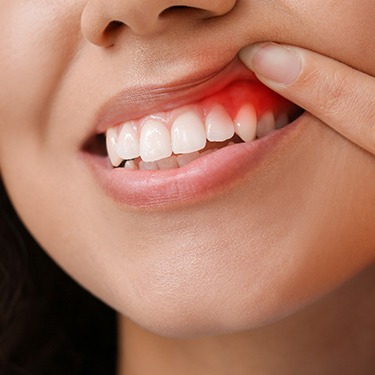
Based on how far it develops, gum disease can cause various symptoms. The signs to watch for can thus vary from patient to patient.
Take gingivitis, for instance. This stage of gum disease has symptoms like:
- Gum tenderness
- Bleeding gums
- Dark red gums
- Gum swelling
- Gum recession
- Chronic bad breath
Meanwhile, periodontitis has more severe warning signs. These include:
- Loose permanent teeth
- Tooth sensitivity (often due to gum recession)
- Chewing pain
- A shift in your bite
- Changes in your restoration’s fit
- Permanent tooth loss
How Do We Treat Gum Disease?

Ahead of any actual treatment, Dr. Oshins will assess your mouth to see how it’s doing. This examination lets her confirm the state of your gums – their sensitivity, inflammation levels, and so on. Once she’s made her diagnosis, she’ll then suggest specific treatment options. These are usually scaling and root planing, antibiotic therapy, and salivary testing.
Scaling & Root Planing
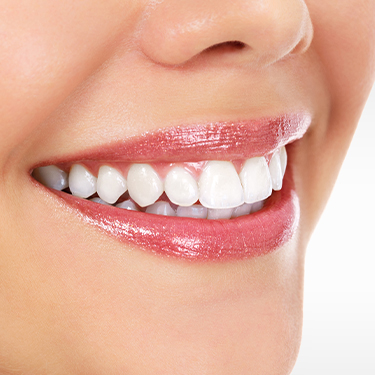
Scaling and root planing can help with most cases of gum disease. As the go-to treatment for infected gums, they give your gumline a deep cleaning that manages your infection. Just note that these processes may not reverse your gum disease; they’ll only keep it from worsening if it's severe. Also, keep in mind that scaling and root planning are intensive and require weeks of recovery. If you want to learn more, please keep reading or call our office for details.
Do I Need Scaling & Root Planing?
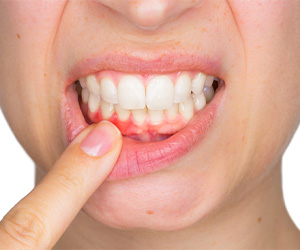
Scaling and root planing is often called a “deep cleaning.” When we notice early signs of gum disease, including bleeding, swelling, and inflammation, we will try to address the issue upfront to keep it from progressing and causing permanent damage to your smile. The goal of scaling and root planing is to remove bacteria that have accumulated around or beneath the gumline. During this treatment, the roots of your teeth will be smoothed over. This helps to encourage your gums to heal quickly by reattaching to your teeth.
The Process of Scaling & Root Planing
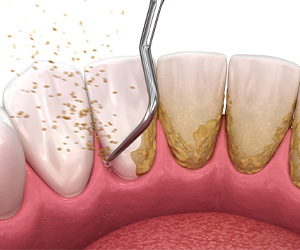
Generally, scaling and root planing takes place over two appointments, and it can be broken down into two different parts. The first part is the “scaling.” This involves scraping away plaque and tartar using special dental instruments. We will also target areas beneath the gumline where bacterial deposits have formed.
Once we’ve finished scaling, we will begin root planing by smoothing the sections of the teeth that are normally hidden beneath the gum tissue. This helps the gums to adhere to your teeth more easily and makes it more difficult for bacteria to build up on them again. Ultimately, it can reduce your risk of developing gum disease in the future.
Aftercare Tips for Scaling & Root Planing

After scaling and root planing, some soreness is normal. Your gums may also be slightly swollen. This should all be temporary, and you will be back to normal in a few weeks. Here are some steps that you can take to speed up your recovery time:
- Gently brush twice a day with a soft-bristled toothbrush and fluoridated toothpaste.
- Rinse your mouth with saltwater after eating to prevent irritation and wash away food debris.
- Floss between each of your teeth every day.
- Stick to a soft diet for the first 48 hours after your treatment.
- Avoid foods that are particularly spicy, acidic, or hot.
- Refrain from intense physical activity immediately after your procedure.
Antibiotic Treatment

Gum disease can be caused by many different kinds of oral bacteria, and determining which one is troubling a particular patient can greatly influence our approach to care. That’s why we utilize OralDNA testing, which allows us to identify exactly what is causing someone’s infection. From there, in addition to scaling and root planing, we can employ a topical antibiotic that is specifically designed to eliminate a certain bacteria.
Salivary Testing
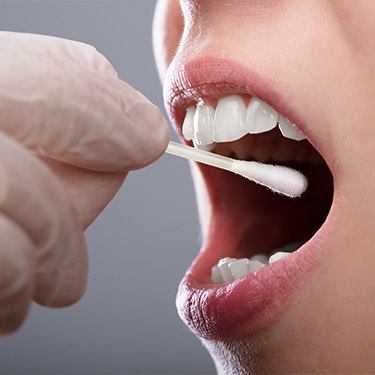
A person’s saliva is a good mirror of their health, containing biomarkers that provide invaluable insight about what’s going on with the rest of the human body. This is especially true when we’re trying to help our patients overcome serious gum disease. By testing saliva, our team can determine the unique strain (or strains) of infectious bacteria that are present in the patient’s mouth. This way, Dr. Oshins can personalize your treatment plan, leading to long-lasting improvement.
